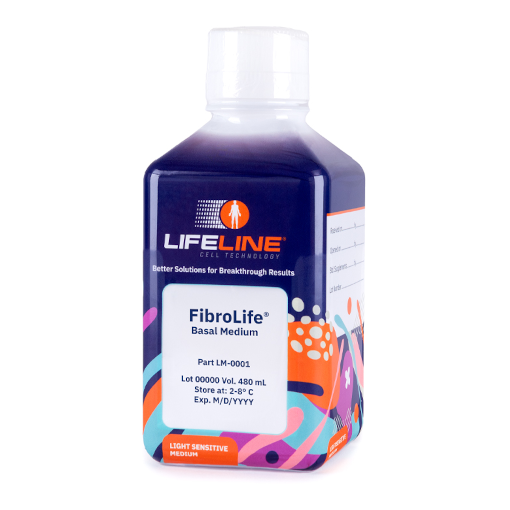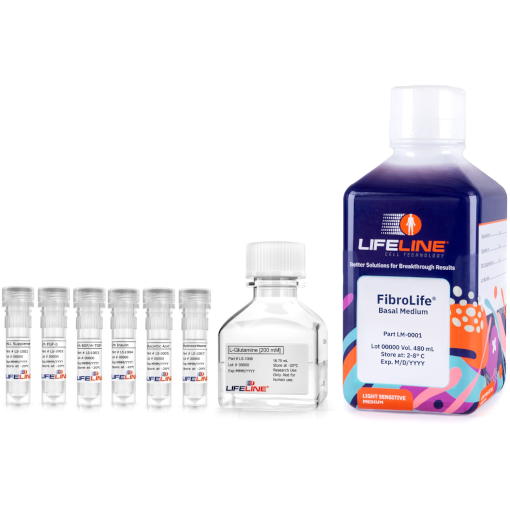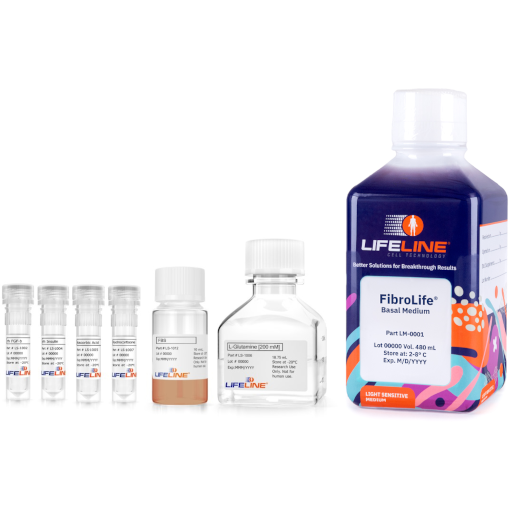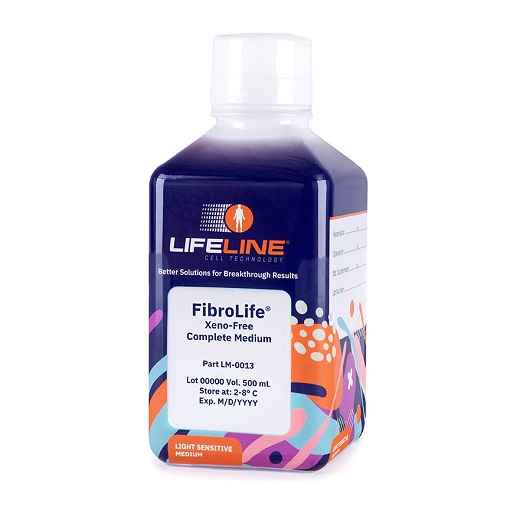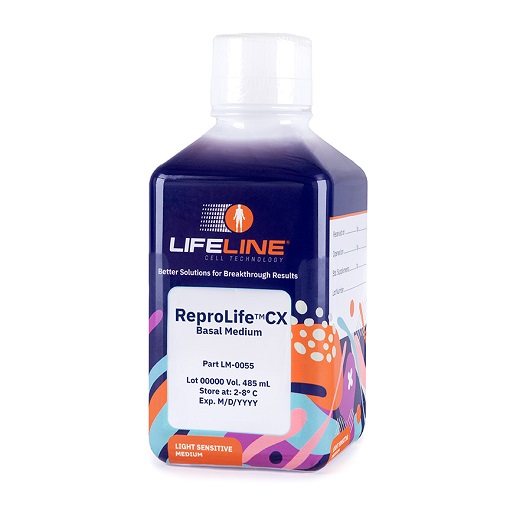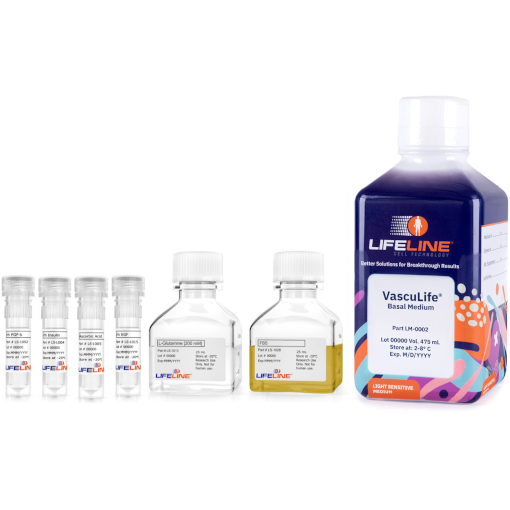Primary Cells & Culture Media
Isolated Primary Cells and selective Cell Culture Media in Experimental Research
Utilizing isolated primary cells in conjunction with carefully optimized cell culture media aims to replicate in vivo conditions, thereby enhancing the physiological relevance of studying cellular behaviors and responses.
Therefore, primary cell culture is the first choice when interested in:
- Disease Modelling and Mechanistic Studies: Isolated primary cells serve as essential models for studying disease mechanisms and pathophysiology. Cultures of healthy and diseased lung epithelial cells (e.g. bronchial/tracheal, small airway), or immune cells, among others, enable researchers to elucidate the underlying molecular pathways driving diseases such as pathogenesis and dysfunction of epithelial tissues and autoimmune conditions.
- Drug Discovery and Development Studies: Primary cell cultures are invaluable tools in drug discovery, allowing researchers to assess the efficacy, toxicity, and pharmacological properties of candidate compounds in a biologically relevant context.
Primary cell culture systems provide researchers with more physiologically relevant models for studying complex biological processes, disease mechanisms, and drug responses.
3D Culture Models: From Organoids, Co-Culture Systems and Organ-on-a-Chip Technology
Organoid and spheroid cultures as well as co-culture systems represent advanced three-dimensional models that mimic the complexity of tissues and organs in vitro.These approaches result in more complex and physiologically relevant systems compared to traditional monolayer cultures, allowing researchers to study cellular interactions, tissue development, disease mechanisms, and drug responses within a setting that closely mimics in vivo conditions.
Three-dimensional, multilineage human skin models—an area where CellSystems® has historically acquired extensive experience—serve as a basis for the reproduction and study of various skin diseases, as well as their treatment in vitro. Furthermore, these models have significantly advanced research in critical areas such as wound healing, and burn therapy. Additionally, the emergence of Organ-on-a-Chip Technology has provided captivating insights into the complex microenvironment and physiological responses of human organs in vitro. In a recent publication, primary cells, culture media, and extracellular matrix proteins were utilized in a microfluidic two-channel co-culture to shed light on the dynamics of the vaginal microbiome for understanding female reproductive tract health and disease.
For a comprehensive overview about our extracellular matrices, adhesion molecules and bioprinting materials, visit Matrix Proteins & Bioprinting.
-
FibroLife - Basal Medium
Cat.-Nr: LM-0001
FibroLife® basal media has been optimized for the culture of Human Fibroblasts and Mesenchymal Stem Cells-Pre-Adipocytes. FibroLife® provides a... Read More
-
FibroLife - Fibroblast Growth Medium Kit (Serum-Free)
Cat.-Nr: LL-0001
FibroLife® Fibroblast Serum-Free Medium Complete Kit is a defined medium optimized for the serum-free culture of fibroblasts. FibroLife® Serum-Free... Read More
-
FibroLife S2 - Fibroblast Growth Medium Kit
Cat.-Nr: LL-0011
Optimized for Culturing Human Fibroblasts and Mesenchymal Stem Cells-Pre-Adipocytes in a Low-Serum (2% FBS) Environment: FibroLife® S2 supports the... Read More
-
FibroLife Xeno-Free - Fibroblast Complete Medium (Frozen)
Cat.-Nr: LM-0013
FibroLife® Xeno-Free Fibroblast Complete Frozen Medium is a variation of our FibroLife® Cell Culture Medium optimized for culture of fibroblasts... Read More
-
Human Cervical Epithelial Cells
Cat.-Nr: FC-0080
Lifeline® Normal Human Cervical Epithelial Cells (HCxEC), when grown in Lifeline® ReproLife™ CX Medium, provide an ideal serum-free culture model... Read More
-
Human Endometrial Uterine Epithelial Cells
Cat.-Nr: FC-0078
Lifeline® Normal Human Endometrial (Uterine) Epithelial Cells, when grown in Lifeline® ReproLife™ Medium, provide an ideal serum-free culture... Read More
-
Human Fallopian Tube Epithelial Cells
Cat.-Nr: FC-0081
Lifeline® Normal Human Fallopian Tube Epithelial Cells , when grown in Lifeline® ReproLife™ Medium, provide an ideal serum-free culture model for... Read More
-
Human Uterine Fibroblasts
Cat.-Nr: FC-0076
Lifeline® normal Human Uterine Fibroblast Cells, when grown in FibroLife® S2 Medium, provide ideal In Vitro models for Uterine contraction and... Read More
-
Human Uterine Smooth Muscle Cells
Cat.-Nr: FC-0075
Lifeline® normal Human Uterine Smooth Muscle Cells when grown in VascuLife® SMC Medium provide an ideal low-serum (5%) culture model for the study... Read More
-
Human Vaginal Epithelial Cells
Cat.-Nr: FC-0083
Normal Human Vaginal Epithelial Cells provide an ideal serum-free culture model for many areas of research when grown in Lifeline® ReproLife™... Read More
-
ReproLife™ - Basal Medium
Cat.-Nr: LM-0044
ReproLife™ Basal Medium is optimized for the culture of human female reproductive epithelial cells, including Vaginal Epithelial Cells and... Read More
-
ReproLife™ - Female Reproductive Cells Growth Medium Kit
Cat.-Nr: LL-0068
ReproLife™ Female Reproductive Medium is a new medium optimized for the culture of Normal Human Female Reproductive Epithelial Cells, including:... Read More
-
ReproLife™ - LifeFactors Kit
Cat.-Nr: LS-1097
ReproLife™ LifeFactors® Kit contains associated supplements and growth factors called “LifeFactors®” for use with ReproLife™ Basal Medium... Read More
-
ReproLife™ CX - Basal Medium
Cat.-Nr: LM-0055
ReproLife™ CX Epithelial Basal Medium is a new basal medium optimized for the culture of Normal Human Cervical Epithelial Cells. ReproLife™ CX... Read More
-
ReproLife™ CX - Cervical Epithelial Cells Growth Medium Kit
Cat.-Nr: LL-0072
ReproLife™ CX Cervical Epithelial Medium Complete Kit is a new medium optimized for the culture of Normal Human Cervical Epithelial Cells (HCxEC).... Read More
-
ReproLife™ CX - LifeFactors Kit
Cat.-Nr: LS-1116
ReproLife™ CX LifeFactors® are the associated supplements and growth factors for use with ReproLife ™ Basal Medium and Human Cervical Epithelial... Read More
-
VascuLife® SMC - Smooth Muscle Cells Growth Medium Kit
Cat.-Nr: LL-0014
VascuLife® SMC, Smooth Muscle Cell Growth Medium is optimized for the culture of Human Smooth Muscle Cells (SMC). VascuLife® SMC, Smooth Muscle... Read More

